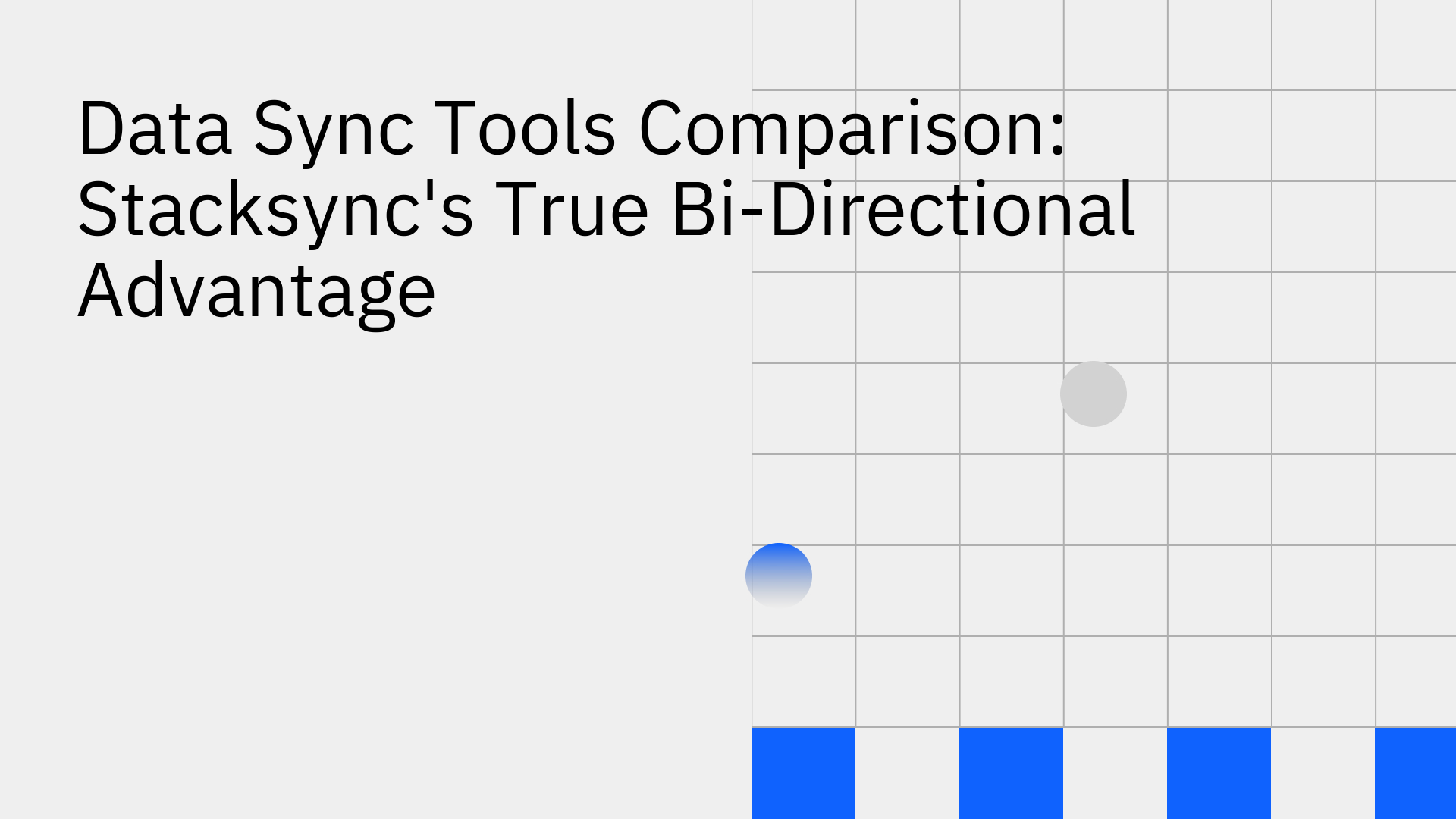
In today's fast-paced business world, keeping information consistent across multiple applications, like your CRM, ERP, and databases, is a massive challenge. When different teams use different software, data quickly becomes siloed and out of sync.
This isn't just an annoyance; it forces engineering teams to spend valuable time building and maintaining fragile integrations instead of focusing on core business goals. This is where data synchronization becomes essential.
Sync tools can move data in one direction (one-way) or both (two-way, or bi-directional). While many platforms claim to offer two-way sync, their technology often falls short. This article provides a clear data synchronization tools comparison, showing why a true bi-directional architecture like the one offered by Stacksync is the superior choice for any business that depends on accurate, real-time information.
Bi-directional, or two-way, synchronization is a process that mirrors data between two or more systems. It ensures that any change, whether a creation, update, or deletion, in one system is automatically and accurately reflected in the others [1].
This approach creates a single, reliable source of truth, even when your data is spread across different applications. By enabling all teams to work from the same up-to-date information, it significantly improves collaboration and breaks down departmental silos [2].
A powerful bi-directional sync solution offers several clear advantages:
To better understand the technology, you can explore this guide on what two-way sync is, from basics to advanced usage.
Many tools create the illusion of two-way sync by patching together two separate one-way automations. For instance, one rule says, "When App A updates, push it to App B," and a second rule does the reverse. This simple, trigger-based approach is often a recipe for data chaos.
The market is filled with data sync tools, but choosing the right one requires looking beyond flashy features and understanding the underlying technology. Many businesses select the wrong software because they don't focus on actual performance and reliability [4]. Let's compare the main categories.
Stacksync is the gold standard, purpose-built for true, real-time bi-directional synchronization. It avoids the common pitfalls of trigger-based systems with a more intelligent and robust architecture.
Its core advantages include:
For an in-depth look, see this comprehensive guide on the best two-way sync tools for 2025.
These tools are primarily designed for one-way data movement, usually in large batches. For example, they pull data from applications into a data warehouse for analysis. While some now offer bi-directional features, it is not their core function. They often rely on trigger-based methods, suffer from high latency, and are not built for the demands of real-time operational use cases.
Platforms like Zapier or Workato are great for simple, trigger-based automations following "if this, then that" logic. However, trying to simulate a two-way sync with these tools is complex and fragile. They lack the sophisticated conflict resolution and state management needed for enterprise-grade synchronization, making them prone to the infinite loops and data integrity problems discussed earlier. You can see a detailed breakdown in this data integration tools comparison chart.
It's also important to distinguish application data sync from file sync. Tools like Dropbox or Google Drive are built to synchronize unstructured files like documents and images across different devices [5]. They are not designed for syncing structured data between complex business systems like CRMs, ERPs, and databases.
To help you evaluate and choose the best tool for your needs, here is a framework comparing the different approaches across key factors.
For a broader look at some of the most dependable platforms on the market, you can explore these top 10 reliable data integration platforms for 2025.
While many tools promise two-way sync, most deliver a fragile imitation that can't be trusted with your company's most important data. For mission-critical operations where data integrity and real-time accuracy are essential, a purpose-built solution is non-negotiable. "Fake" bi-directional syncs introduce risk, create more manual work, and ultimately fail when you need them most.
Stacksync stands out as the leading choice for engineers and businesses that need reliable, scalable, and truly real-time data synchronization. With its stateful sync engine, sub-second speed, powerful issue management, and smart API handling, it provides a foundation of data consistency you can build your business on. You can learn more by comparing the best data integration platforms for real-time synchronization.
Ready to experience true bi-directional sync? Book a demo with a cloud architect or start your 14-day free trial today.